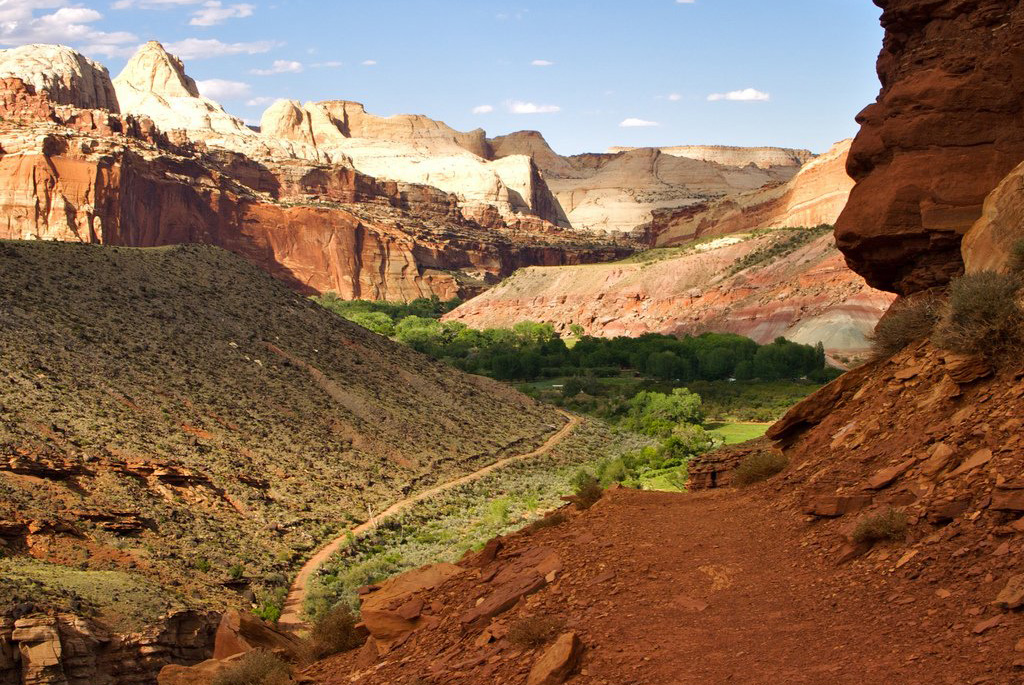Eco-Tips are here to help you make conscious decisions in the outdoors. Climb well, be well, and help protect our natural wonders.
Most climbers already live by Leave No Trace principles at the crag, and we’ve all heard the old cliché: take only pictures leave only footprints. Sometimes though, even footprints are too much. When climbing in a desert environment leaving footprints in cryptobiotic soils can be ecologically devastating. Maybe you have seen them, those signs that warn you to stay on the trail. Maybe you have even seen those ones with a picture of a cartoon boot crushing tiny terrified anthropomorphized dirt clumps (see picture below).
Not terribly far from the truth, those dirt clumps really are alive, and are composed of a suite of microorganisms. These microbes act to stabilize soils. In an arid environment, so prone to erosion, they hold the soils in place against wind and rain, retain water, and keep the desert alive with vital nutrients. Some studies even suggest that disturbance to this crust makes it ripe for the growth of invasive species, further degrading the desert ecosystem (Hernandez and Sandquist 2011).
Related: Eco-Tip: When in Doubt, Pack it Out
When a person walks off trail the crust is damaged. Depending on the extent of the damage and the type of soil crust, recovery takes a very long time—anywhere from 20 to 1000 years to recover (Belnap 2003). Staying on trails is a crucial part of caring for the desert ecosystem. However, the truth remains that sometimes there is not a trail going to where adventure-seeking climbers want to go.
If you are observant, you can still avoid disturbing the fragile crust. Look for areas washed out with rain, arroyos with loose sand, and areas of hard rock to walk on without harming cryptobiotic soils. Even if you feel like cutting a switchback or walking off trail to find a perfect pee spot, take a minute more to take the long way around or to plan your steps consciously; it’s a simple way you can care for the desert.
If you love learning about ecology, more information can be found in the literature listed below, and at websites for our beautiful national parks!
Belnap, J. 2003. The world at your feet: desert biological soil crusts. Frontiers in Eccology and the Environment 1: 181-189.
Hernandez, R.R., and Sandquist, D.R. 2011. Disturbance of biological soil crust increases emergence of exotic vascular plants in California sage scrub. Plant Ecology 212: 1709-1721.
http://www.nps.gov/cany/naturescience/soils.htm
www.nps.gov/jotr/naturescience/cryptocrusts.htm
Want more climbing content? Get our awesome climbing newsletter.
Join our mailing list to receive the latest climbing news, hand-picked gear deals, training, articles, and more updates from our team. Thanks for supporting our grassroots community!
